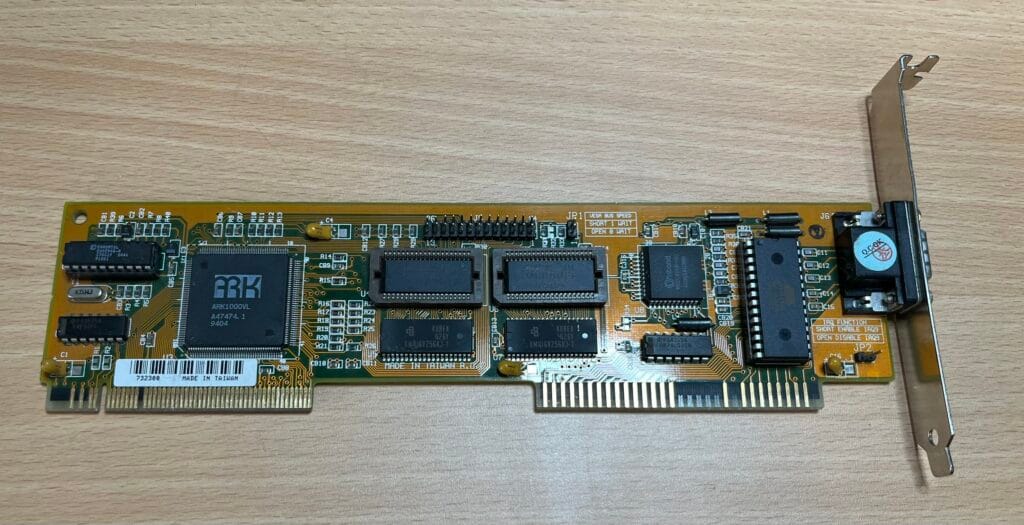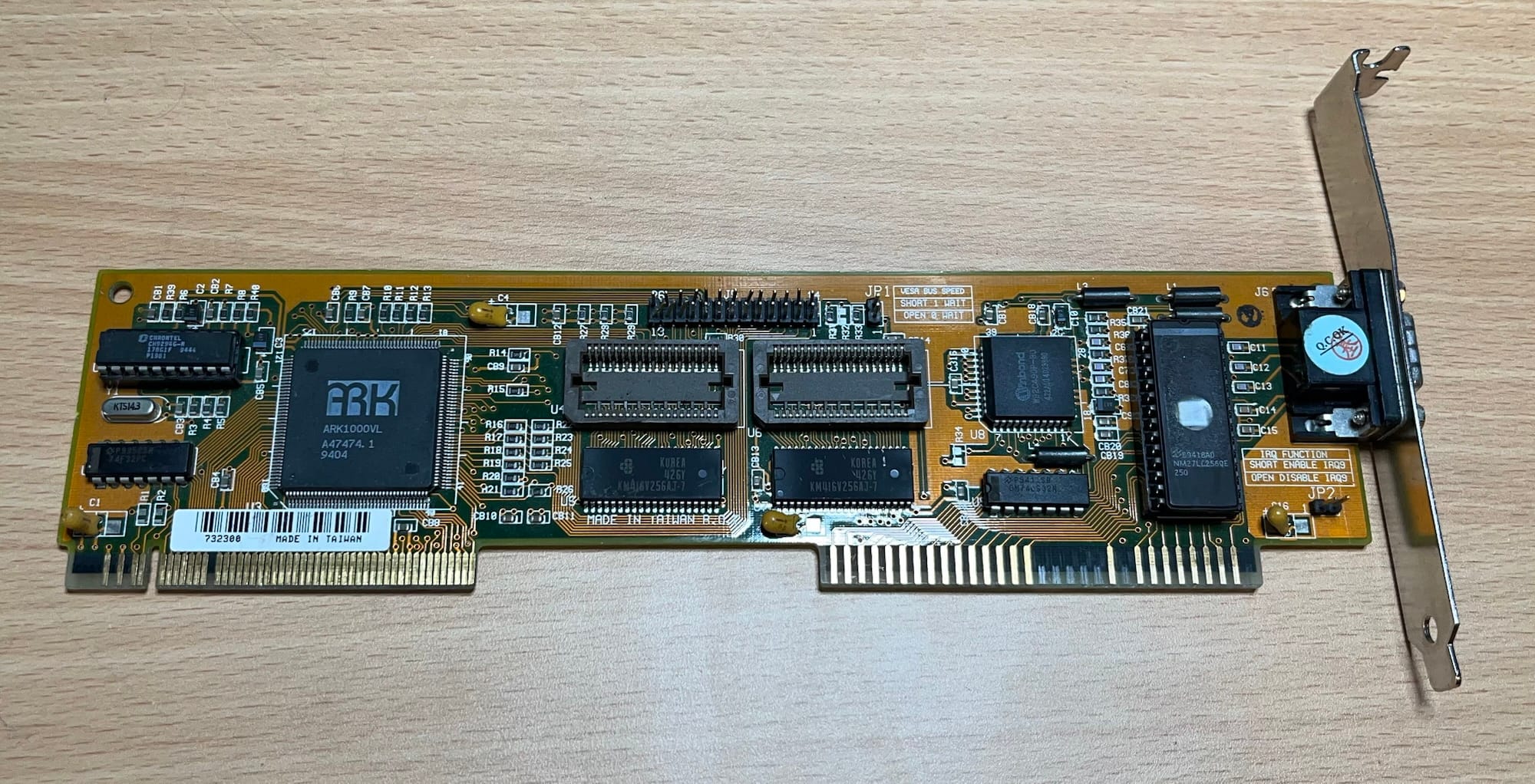According to some, the ARK1000VL is considered the fastest VLB graphics card chip you can get. I recently repaired several other VLB graphics cards, so when an ARK1000VL based card came up, I had to take the challenge.
The Card
The card itself is unbranded and, like most VLB graphics cards, there is a video BIOS connected to the ISA bus and the graphics chip on the VLB bus. 1MB of RAM as standard, with the option to upgrade it to 2MB.
Some of the pins were bent, but physically it looked fine.
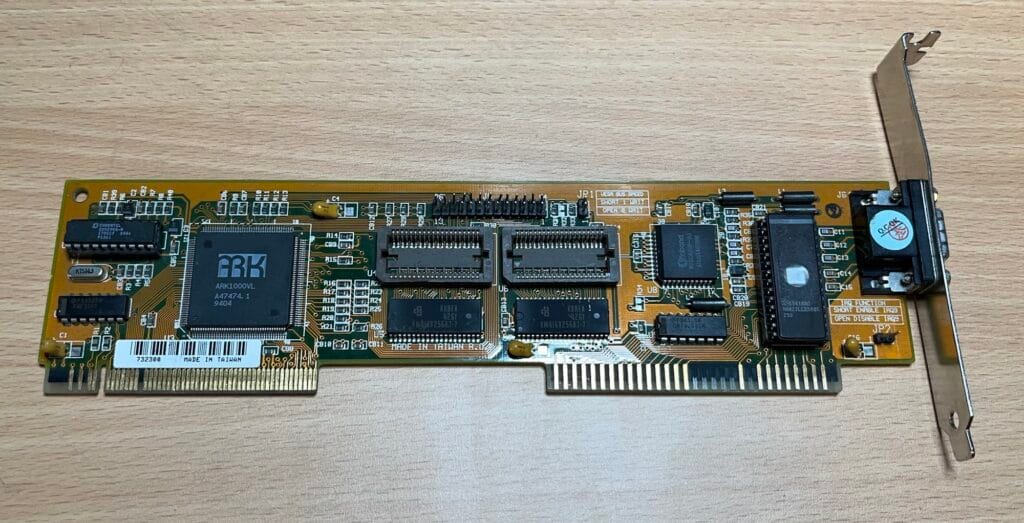
The EPROM was missing the label, so I figured I would dump it, just to be sure it is good. It is binary identical version 1.3.0 ROM that is available on The Retro Web. I also found a version 1.4.0 ROM image and burned that to a ROM just in case.
Testing
I popped the card onto a test rig. It failed at the video BIOS execution stage and then the whole machine went into weird codes and a high-pitched beep sequence.
I popped the wait-state jumper on, just to make sure it wasn’t that. But it didn’t change anything. I also tried both BIOS ROMs, also no change.
Inspection
I gave the board a quick inspection under the microscope to see if I missed anything, sure enough, I found something.
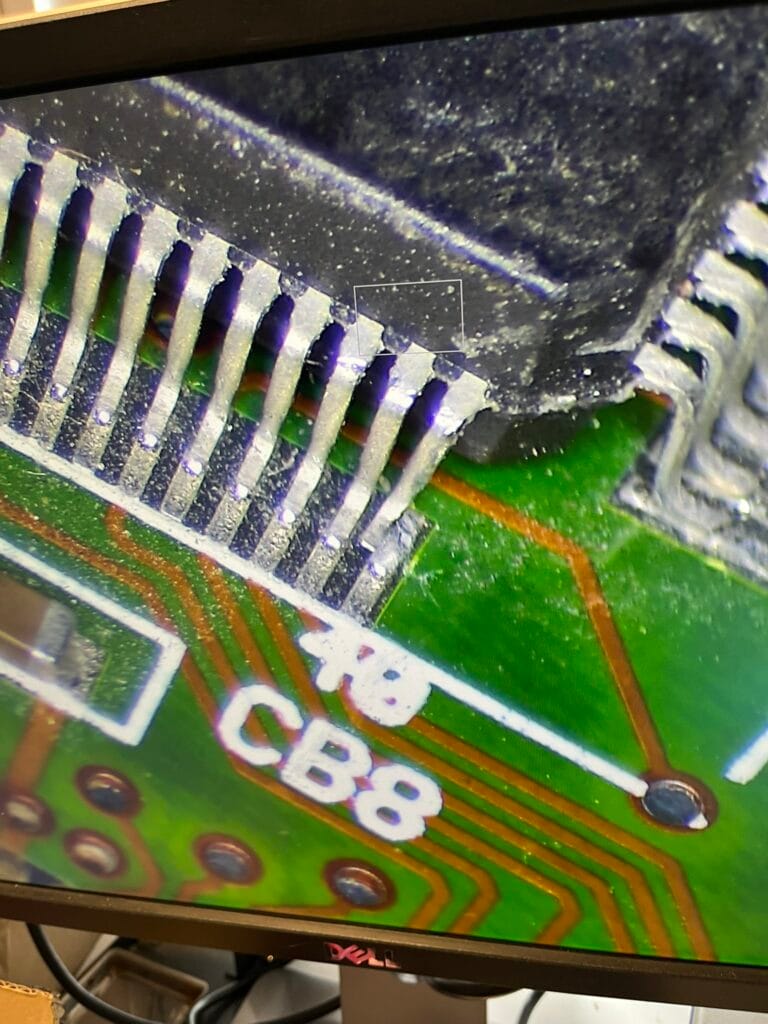
Something must have knocked that corner pin and detached it from the solder joint. Judging by the trace, that was an address or data line, so I’m not surprised the entire machine crashed when the BIOS was trying to talk to initialise the board.
Take 2
I soldered that pin back into place, and popped the board back into my test rig, and…
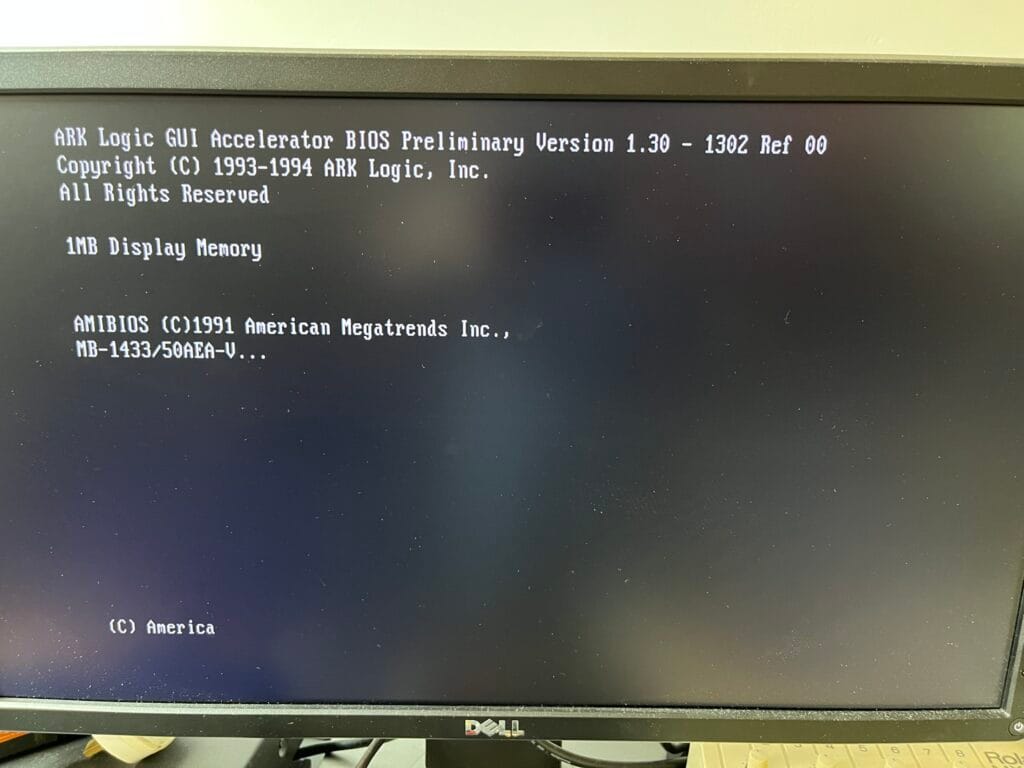
A sort-of win. We have an output, but the machine crashes at this point. I figured it might need the wait-state jumper fitted for this motherboard, so I tried that.
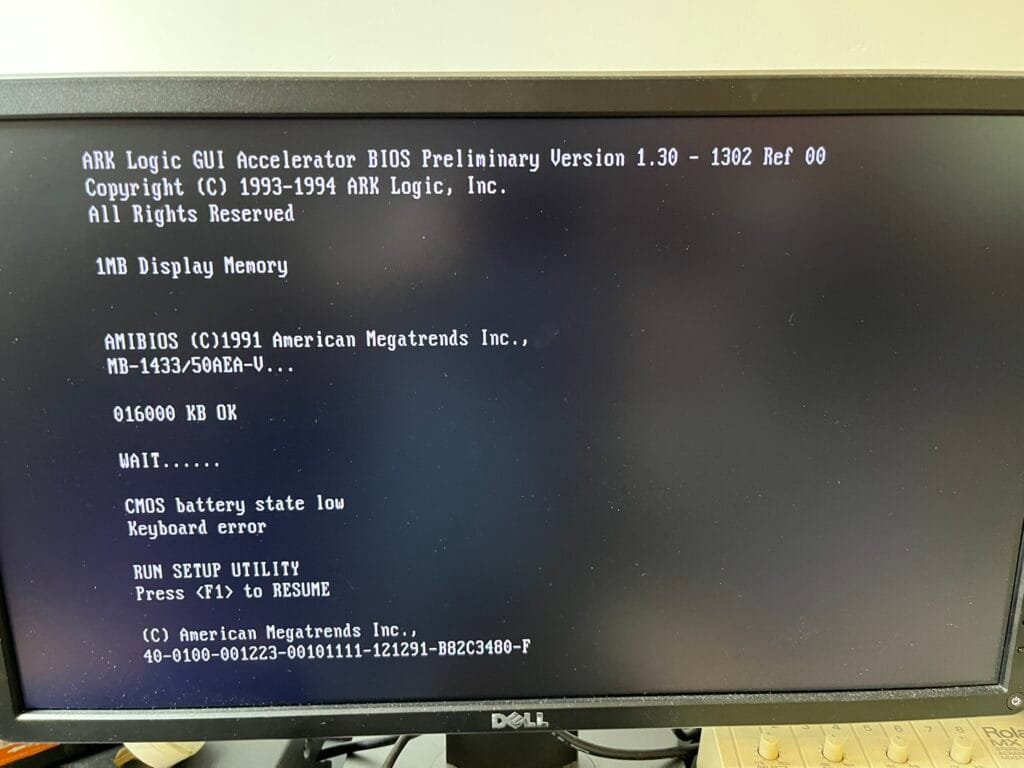
Excellent! It is working on this board.
Benchmark
Now that it works, I put it into my main 5×86 based VLB machine and ran the 3DBench (Faster PCs) and Doom FPS (max details) benchmarks. Both from Phil’s Computer Lab benchmark pack. On this motherboard, I could run it without the 1-wait-state jumper. I tried with 1MB and 2MB of RAM and both video BIOS versions, there was no difference in the benchmark results.
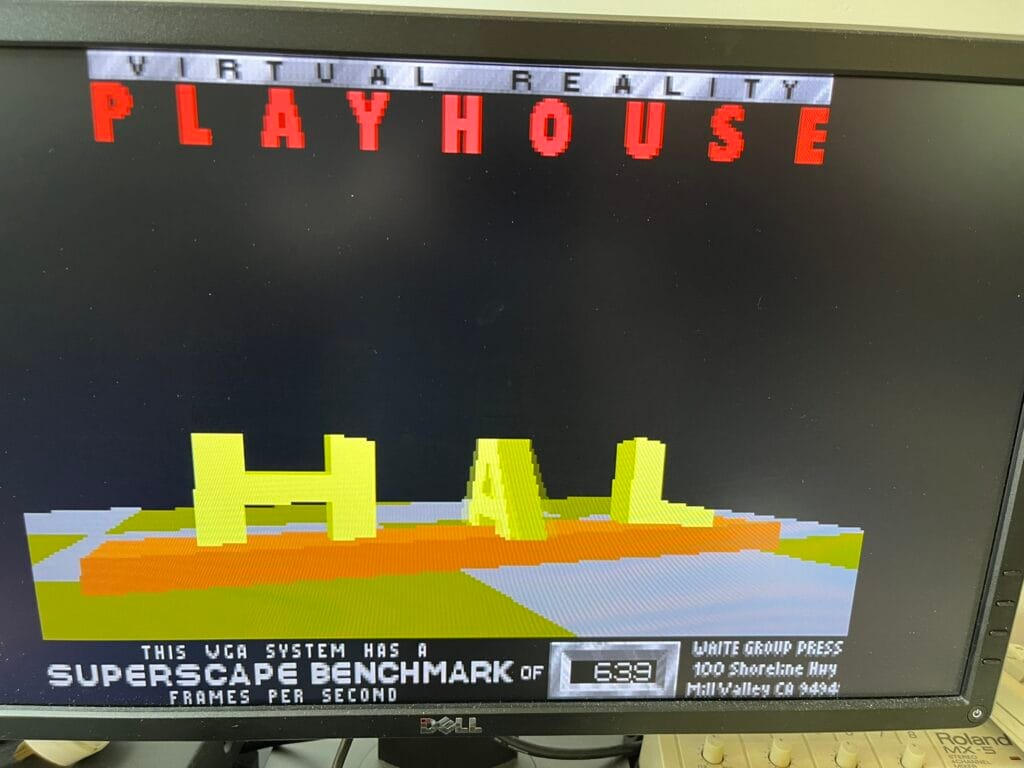
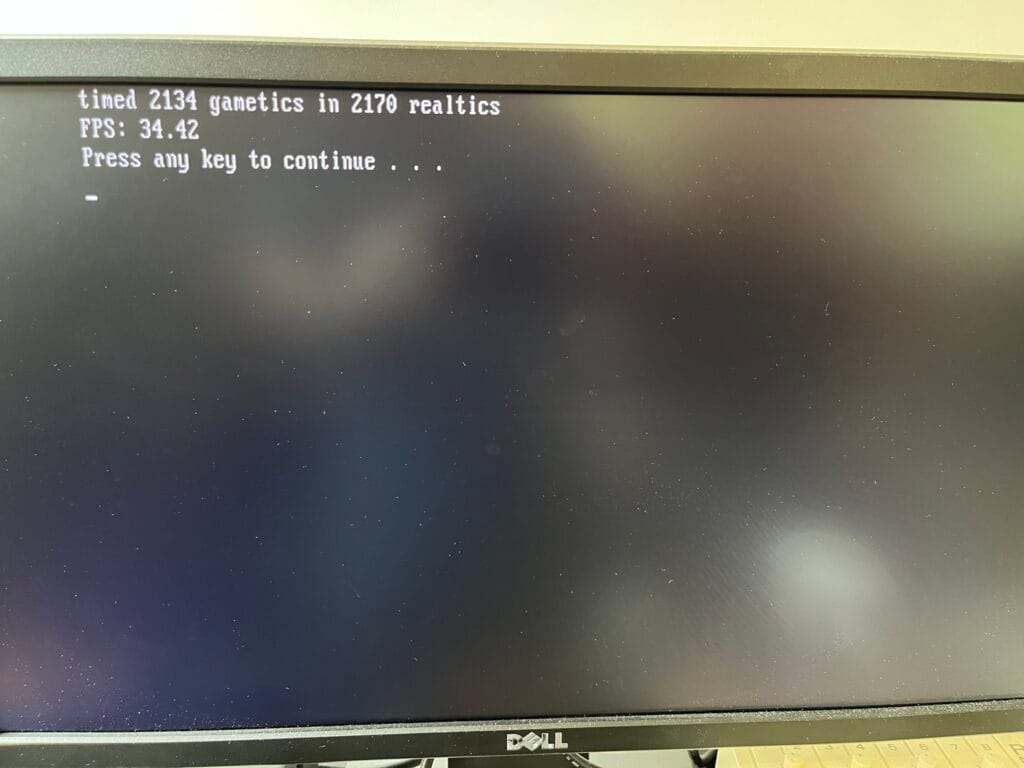
Let’s compare these results with the other cards I’ve tried so far:
| Graphics Chip | 3DBench | Doom FPS |
|---|---|---|
| Cirrus Logic GD-5429 | 58.2 | 30.17 |
| Trident TGUI9440 | 60.7 | 31.72 |
| ARK1000VL | 63.9 | 34.42 |
There isn’t a huge amount in it, but the ARK1000VL is the clear winner so far. I admit that I haven’t tried to tweak the BIOS settings of this machine to oblivion, and there may be other bottlenecks.
Conclusion
This is a fantastic card, and in reality it took longer to write this post than to diagnose and fix it. I will probably keep the Trident in my main machine, though. The reason for this is the Trident has a RAMDAC that is fast enough to support 1024×768 non-interlaced. The ARK1000VL has a slower RAMDAC and can only support interlaced at 1024×768. For most DOS gaming it won’t be a problem, but personally, I want something that covers high resolution (for the time) too.
